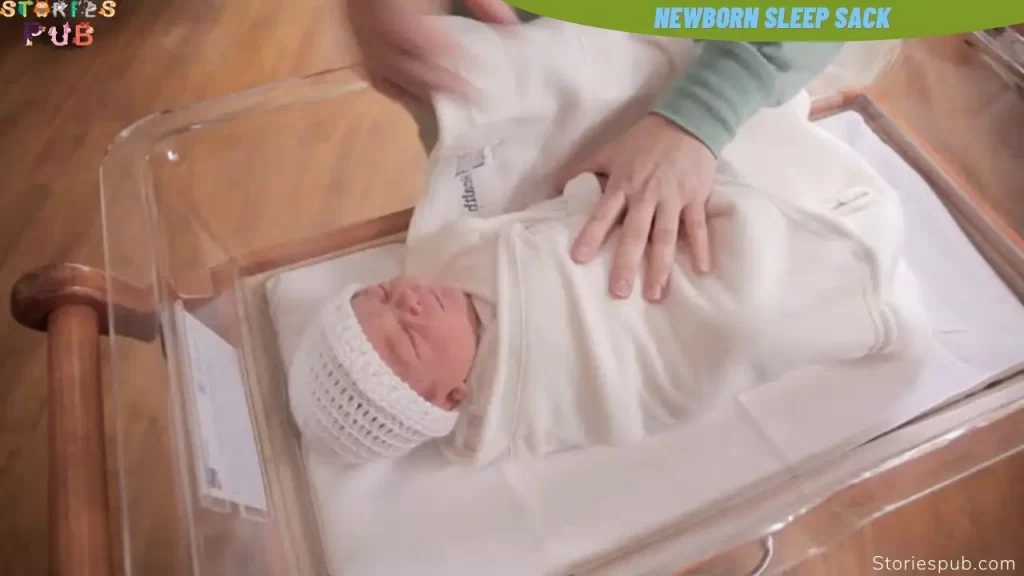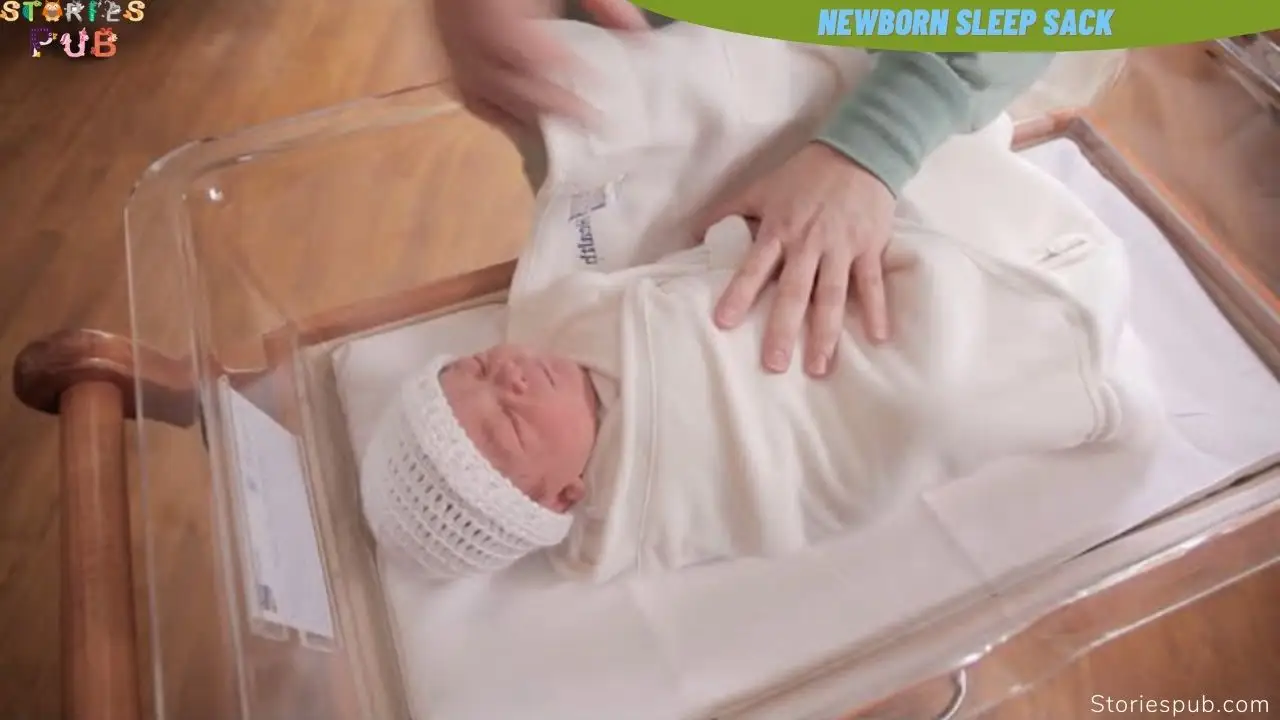Newborn Sleep Sack: How to Buy Perfect Sleeping Bags

A newborn’s sleep is of paramount importance for the growth and development of your little one. For parents, finding the best sleep sack that meets their baby’s needs can be a challenging task, considering how many styles and sizes are available on the market today. With so much information out there, it can be difficult to decide which sleeping bag is right for you and your child.
To make life easier, here we’ll discuss all the important factors you should consider before purchasing a newborn sleep sack – from fabric type to size – so that you buy exactly what’s ideal for your growing baby!
What is a newborn sleep sack?
A newborn sleep sack is an essential item for a baby’s first few months of life. It is a soft and breathable wearable blanket that helps keep your little one warm, safe, and comfortable. It also prevents the baby from getting tangled up in blankets so that he or she can move freely without risking entanglement.
Its lightweight, adjustable design promotes sleep by wrapping snugly around the baby’s whole body, providing warmth and security while sleeping through the night. The gentle fabric is perfect for those special cuddle moments with your newborn, ensuring both parent and baby have a peaceful night’s rest.
How to buy the perfect newborn sleep sack
When shopping for a newborn sleep sack, there are several factors to consider to ensure that you choose the right one for your baby:
Size: Make sure to choose a sleep sack that fits your baby’s size and weight. Most sleep sacks come in different sizes, from preemies to 24 months.
Material: Look for sleep sacks made from soft, breathable materials like cotton or bamboo. Avoid materials that can cause skin irritation or overheat.
Seasonal considerations: If you live in a warm climate, choose a lighter-weight sleep sack. For colder weather, look for a heavier-weight sleep sack or one with added insulation.
Easy to use: Make sure the sleep sack has a convenient zipper or snaps that make it easy to put on and take off.
Different types of newborn sleep sacks
Newborn sleep sacks come in different types, each with its features and benefits. Here is a guide to the most common types:
1. Swaddle Sleep Sack: This type of sleep sack is designed to wrap around a newborn’s body, providing a snug and secure feeling that mimics the sensation of being in the womb. To use a swaddle sleep sack, follow these steps:
- Place the baby inside the sleep sack, with their arms wrapped inside the swaddle flaps.
- Fasten the Velcro or snaps it securely around the baby’s waist.
Ensure that the swaddle is snug but not too tight, allowing for comfortable movement and airflow.
2. Wearable Blanket Sleep Sack: This type of sleep sack is essentially a one-piece blanket with sleeves that zips up from the bottom, allowing the baby to stay warm without the risk of being covered too much and overheating. To use a wearable blanket sleep sack, follow these steps:
- Place the baby inside the sleep sack, with their arms through the sleeves.
- Zip up the sleep sack, ensuring it fits snugly but comfortably around the baby’s body.
3. Sleeping Bag Sleep Sack: This type of sleep sack is similar to a wearable blanket, but it’s a bit roomier and allows more freedom of movement. To use a sleeping bag, follow these steps:
- Place the baby inside the sleep sack, with their arms through the sleeves.
- Ensure that the sleep sack fits snugly but comfortably around the baby’s body, allowing for freedom of movement.
Why use a sleep sack?
In today’s modern world, we are constantly overloaded with information and activities that can make it difficult to get a good night’s sleep. That is why some parents are turning to sleep sacks as an alternative way of helping their little ones drift off peacefully.
Sleep sacks offer safe, comfortable warmth that helps babies stay at a steady temperature and prevents them from getting too hot, while also providing a sense of security that is soothing and familiar.
Not only do sleep sacks allow for easier bedtime transitions, but many experts believe they also help encourage independent sleeping patterns. With all the benefits it brings, there’s no wonder more and more parents are considering using sleep sacks for their growing little ones!
How to make sure baby is safe while using a sleep sack
To ensure a baby is safe while using a sleep sack, it’s important to follow these guidelines:
Always place the baby on their back to sleep: This is the safest sleep position for a newborn and reduces the risk of sudden infant death syndrome (SIDS).
Keep the sleep environment free of pillows, blankets, and toys: These items can pose a suffocation hazard to a newborn.
Use the right size sleep sack: Make sure the sleep sack fits snugly but not too tight around the baby’s chest and torso. Ensure there is enough room for the baby to move their arms and legs comfortably.
Check the baby’s breathing regularly: Regularly check to make sure the baby is breathing comfortably and monitor for signs of overheating such as sweating or skin that feels hot to the touch.
Keep the room at a comfortable temperature: The recommended room temperature for a baby’s sleep environment is between 68-72°F (20-22°C). Overheating can increase the risk of SID, so make sure to adjust the room temperature accordingly.
Follow the manufacturer’s instructions: Always follow the instructions provided by the sleep sack manufacturer and make sure the sleep sack is used properly.
It’s also a good idea to discuss any concerns or questions with a pediatrician, who can provide personalized advice and guidance based on your baby’s individual needs and health status.
Conclusion
Choosing the perfect sleep sack for a newborn is essential for a comfortable night’s sleep. Safety considerations should be taken into account first and foremost when selecting a sleeping bag. It is important to check that the sleep sack has been tested for safety and meets relevant safety standards.
There are several different types of sleep sacks to consider, depending on the season, climate, and desired material. Bamboo or synthetic fabrics are both comfortable options as long as care instructions are followed correctly. For extra warmth, layers can be added under the baby’s sleep sack or extra blankets over the top of it.
Thanks for reading…Newborn Sleep Sack: How to Buy Perfect Sleeping Bags
Hello Everyone, How did you like this (Parenting) Newborn Sleep Sack: How to Buy Perfect Sleeping Bags? if you like this article share your view in the comment box, and don’t forget to share this with your friends on Social Media so they can also redy this. For more keep visiting Storiespub.com.
Suggeted Articles





